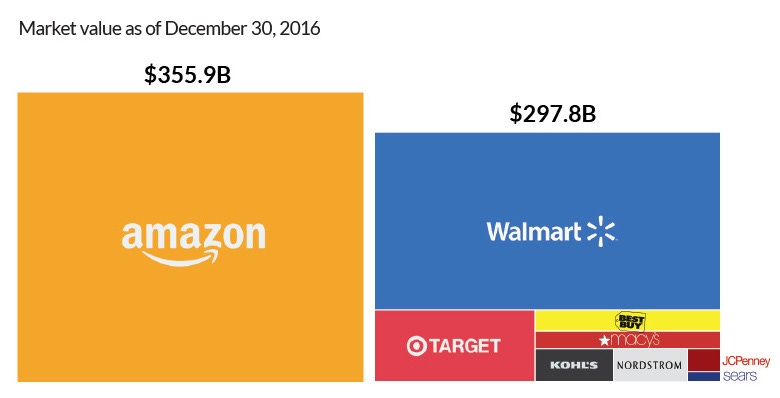One of the most interesting developments happening in retail today is the mass commoditization of certain products and services. Before we dive into this concept, let’s take a step back and give a little context around what commoditization means and how we got here within the retail space.
When the same product or service is offered by multiple businesses certain goods become commoditized. What this means is that there is very little differentiation across brands, the qualities of a product across brands are seemingly identical, and consumers begin to value price and convenience above all else. In a commoditized market, profits are often competed away because the lowest price generally wins which makes it hard for anyone to raise prices.
This is one of the reasons that legacy retailers seem to be in perpetual discount mode. They fear if they don’t offer huge sales and discounts that their customers will go find the lowest price elsewhere; and they’re right.
But how did retail shift towards commoditization?
Prior to eCommerce, retailers held the majority of the pricing power. Consumers had limited optionality and were not able to easily compare prices.
This has all changed with the introduction of the internet. Now, the buying options for consumers endless. Anyone can go online, and find the same product or service from multiple sources across the internet. This unlimited access has created the fundamental transfer of power from retailers to consumers.
Amazon has been the catalyst for massive commoditization across many different sectors of retail. With more and more businesses shifting online, this mass commoditization will likely continue. This is great for consumers as prices will continue to be driven down, but bad for retailers and suppliers because profits in this space are limited.
With Walmart introducing its Prime competitor Walmart+ this week, it seems as though retail is beginning to shift towards a massive online marketplace where Walmart, Shopify, and Amazon are becoming the most important distribution channels. Unfortunately, brands that sell on these platforms will likely see their margins erode overtime as consumers are able to actively compare prices across suppliers and opt for the cheapest option.
1. The Big Two
-
Background: Walmart and Amazon have been in competition ever since Amazon surpassed Walmart as the largest market cap retailer in early 2015. Since the beginning of the pandemic, Walmart has kicked their competitive spirit into high gear, launching a partnership with the eCommerce company Shopify, giving its customers access to all of Shopify’s niche merchants.
-
Details: Walmart just announced that they will be launching a membership program that offers same-day grocery and product deliveries along with other benefits like lower prices at Walmart store’s gas stations. This membership service will be $98 annually. Sound familiar?
-
Background: Amazon was eerily well-positioned to withstand this pandemic. With Prime 2nd day delivery, Whole Foods grocery delivery, and now the introduction of contactless Amazon Go Stores, the retail giant has single-handedly kept our lives on track despite this massive disruption.
-
Details: The stock market is beginning to put the pieces together and Amazon’s stock soared to record highs this week, reaching above $3k/share making it one of the most valuable companies at $1.59T.
2. More Chapter 11 Filings:
-
Details: The iconic suit brand founded in 1818, filed for bankruptcy on Wednesday. It has more than 500 stores worldwide and employs 4,025 people.
-
Details: The company, which owns brands such as Ann Taylor and Lane Bryant, could enter Chapter 11 as soon as this week with a creditor agreement in place that eliminates around $700 million of its $1.1 billion debt load
-
Details: The nearly 50-year-old retailer of upscale kitchenware filed for Chapter 11 bankruptcy protection late Wednesday, announcing in a press release that it’s putting itself up for sale and will close a substantial number of stores.
Other News This Week:
Podcast Recommendations:
As promised I am sharing out my favorite podcast recommendations below! Let me know what you think!
Follow me on Social!
Xoxo Jackie


Recent Comments